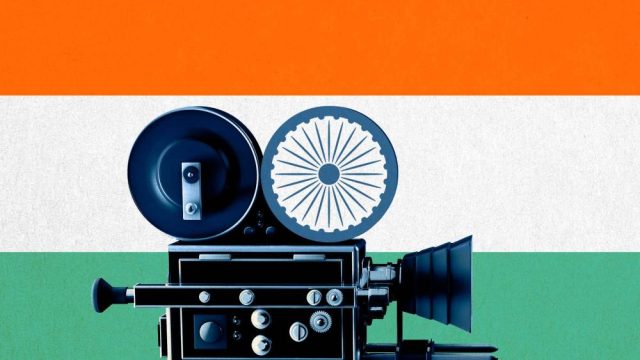The corridor talk at next week’s FICCI-Frames conference in Mumbai, often Indian media’s top confab, is for once less likely to focus on ‘what if?’ and more on ‘what next?’
That’s because, with the January collapse of the $10 billion Sony-ZEE merger plans and late February’s confirmation that Mukesh Ambani’s Reliance Industries (which incorporates Viacom18 and streamer JioCinema) is to tie up most of Disney’s streaming and pay-TV businesses in an $8.5 billion deal, Indian media is set to gain a new market leader.
For local and international operators in the world’s most populous nation, the consequences of those tectonic shifts extend across streaming, pay-TV, channels, advertising, sports and content.
The merged Reliance Industries and Disney India (Disney+ Hotstar and Star TV) giant will be able to capture: 35% of total TV viewership; 40% of the total revenue market for broadcasters, including ad sales and affiliate fees; and 45% of the premium VOD streaming market, including SVOD and premium AVOD, but excluding YouTube and Meta, according to calculations by Singapore-based consultancy Media Partners Asia.
With the merger deal expected to close within 12 months, the Reliance-Disney group will also likely sign a long-term supply deal for Walt Disney content and be able to generate considerable internal cost savings. And it may additionally bid to buy Disney’s 30% stake in the Tata Sky satellite business.
The dual Sony-ZEE and Reliance-Disney quakes underline how difficult it is for foreign entities to maneuver in Indian media. Disney gained market leadership in India with the 21st Century Fox acquisition, but then created a self-inflicted wound from timidity in the sports rights sector and is looking at a $1 billion write-down on Star India, it reported recently. (Nor was this Disney’s first acquisition in India gone sour. In 2012, it bought outright control of film and TV giant UTV, only for it to be rationalized and stripped down.)
Sony, which also has a string of unsuccessful acquisitions in India (ETV, Maa and a failed tie-up with Viacom18 in 2020) needs to find another way to grow from a mid-sized player to a larger agenda-setter. Its Tokyo bosses seem excited by the prospects, but both organic and acquisitive growth will be tricky.
Zee, which can be viewed as a family-controlled traditional business with a stock market listing, may have fewer worries. Despite its poor margins, debt and legal woes, Zee’s vast content library may sustain it and attract other partner companies.
Although the Indian media and entertainment market is seen as dynamic and growing, investment in the content market has already been slowed by hesitancy around the corporate activities, by the global corporations’ woes and by re-evaluations of content priorities in India.
Finding and producing Indian shows that work internationally (outside the diaspora) is tricky, as Prime Video is discovering, though Richie Mehta’s “Poacher” has been a recent global hit. Netflix, which is positioned as an upmarket niche player in India, has nevertheless become a bigger buyer of third party-produced film rights. And, across the board, spending may need to shift more into mass market content as platforms compete for advertising and expand further into AVOD and freemium — and compete for “the next 30 million subscribers.”
MPA suggests that while Netflix will remain strong (and niche on an Indian scale), its mix of local and foreign shows could be challenged by the new Viacom18 / JioCinema and Disney combination, which will be able to offer NBCU, WBD and Disney content as well as its own Indian productions. Netflix this week unveiled its 2024 slate, claiming it to be more diverse, and hinted at a possible move into live-streaming.
Media consolidation, pruning of channel portfolios and the sports calendar may also have consequences for broadcasters’ affiliate fee revenues. The squeeze is expected to most hurt local and news channels and smaller clusters. “Smaller networks such as Times and Warner Bros Discovery will [be most vulnerable]. Sony too given its limited regional presence, will likely get challenged by local [distribution platform operators]. In contrast, larger players like Zee and Sun, boasting a wider and concentrated portfolio of channels, will be last and least to be affected,” MPA said in a new research note.
And, while much executive attention at FICCI-Frames will devoted to the premium end of the spectrum, social video remains huge and growing, with Alphabet’s YouTube and Meta (Facebook, Instagram and Whatsapp) the dominant market leaders. (TikTok is banned in India.)
Video constitutes about 30% of total revenues for both YouTube and Meta, MPA estimates. With over 300 million Instagram users, India is the biggest market for Instagram Reels, ahead of the U.S. and Brazil. For YouTube, the big screen TV has become the fastest-growing segment, reaching some 60 million users, as of the first half of 2023. “In 2023, both platforms maintained their dominance, collectively commanding a 55% share of the total online video market and approximately 75% of the rapidly expanding AVOD segment,” the MPA report said.
Close to the ground, able to operate in diverse local languages and owning content, India’s TV channels have the chance to grow their broadcaster-VOD operations, but they lack Meta and Google’s technology and may look for mergers or alliances to get there.
In the streaming space, beyond the bigger players, India speaks a welter of languages and most of these are well catered to by small specialist streamers. The giants serve the so-called regional market by using their financial clout to dub content into various languages, but their next push is to commission original programming in all of India’s major language groups.
There are two Indias – the relatively small, but globally visible, English-speaking India, and the vast, multilingual and increasingly affluent and aspirational Bharat (the ancient Sanskrit name for the country), where the growth will come from. With his ambitions of scale, Ambani has already achieved Indian market leadership in the telecom and retail sectors. The Disney-Reliance deal will be his play to achieve a similar result in the media business.





















